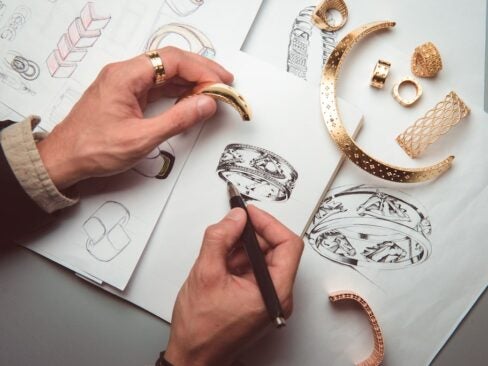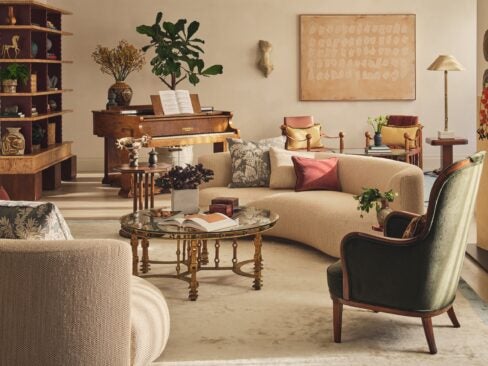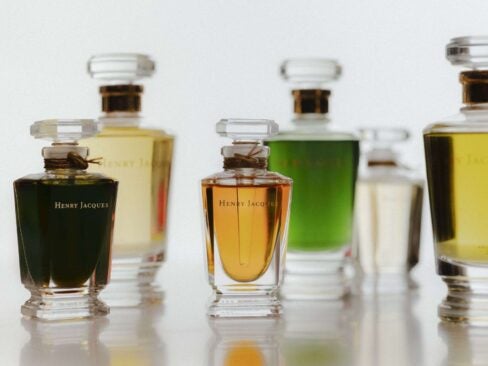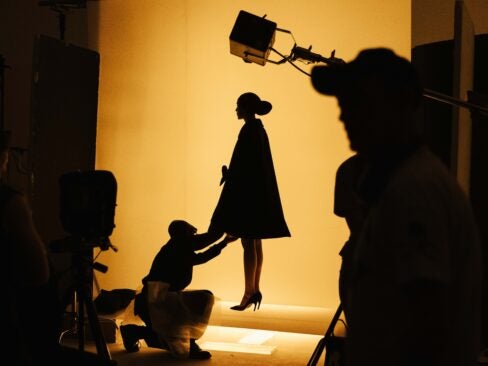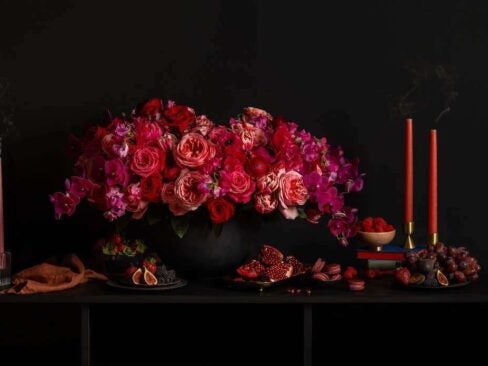As dusk settled over the ancient grounds of Kyoto’s Tō-ji Temple — a Unesco World Heritage site and the city’s oldest Buddhist pagoda — Dior unveiled its Fall 2025 collection.
Set among manicured gardens and beneath the solemn watch of centuries-old cypress beams, creative director Maria Grazia Chiuri staged an homage not just to Japanese artistry but to the enduring kinship between two icons of culture: Dior and Japan.
Chiuri’s garments are never merely garments; they are structures of thought. Here, she approached clothing as architecture, not simply a second skin but a space the body inhabits. The kimono jacket was reinterpreted with enveloping proportions and subtle curvature, offering both protection and elegance. Long tunic dresses hemmed with delicate fringe responded to movement like temple bells in the breeze. Transparency and gradient dyeing created illusions of floating fabric, while golden embroidery, applied like delicate brushstrokes, added dimension and narrative depth.
[See also: Is Louis Vuitton x Murakami the Designer Collab of 2025?]
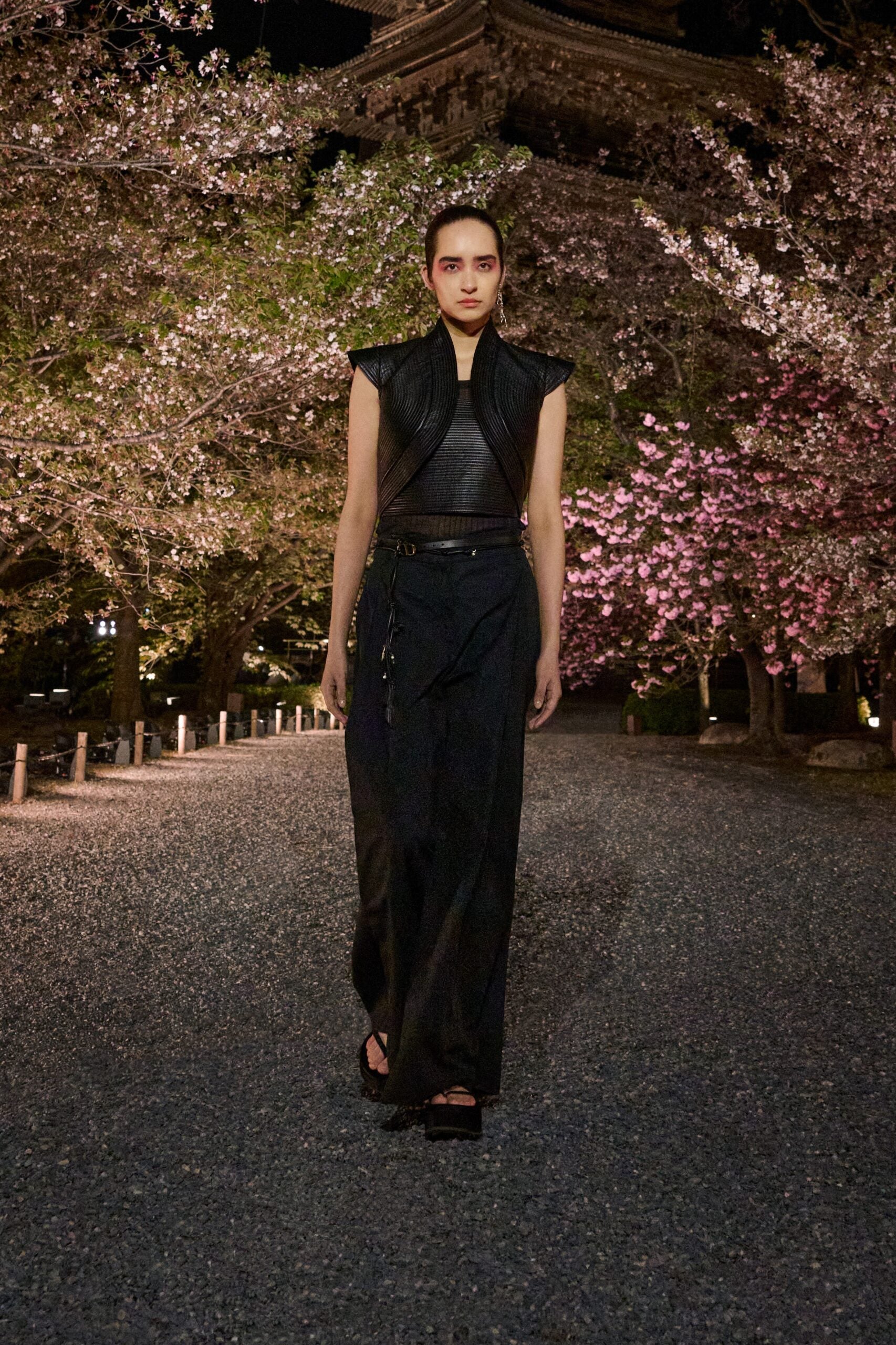
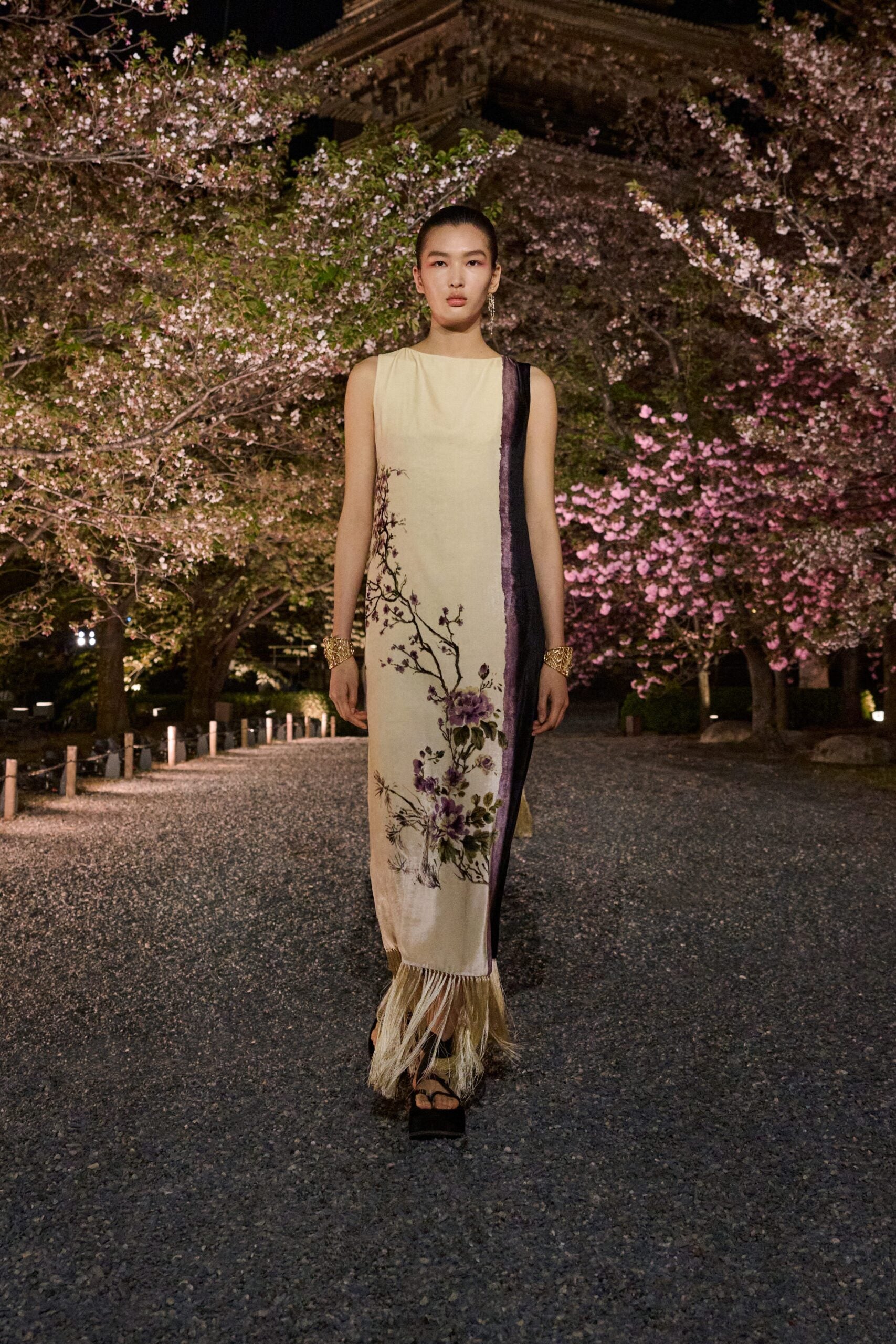
This was not Dior’s first journey to the Land of the Rising Sun. From childhood, Christian Dior found himself enchanted by Japanese imagery. In his memoirs, he fondly recalled the staircase of his Normandy home, lined with prints “in imitation of Japanese art”. It was here, surrounded by visions of pagodas and cherry blossoms, that Dior’s admiration with Japan began.
That fascination blossomed into an enduring creative dialogue. In 1953, Dior introduced the Jardin Japonais (Japanese Garden) haute couture ensemble – a delicate tribute to the fleeting beauty of cherry blossoms. The following year, he collaborated with Kyoto’s prestigious art textile atelier Tatsumura Textile, whose luxurious brocades were featured in designs such as Outamaro. Dior soon became the first Western couture house to present a collection in Japan, staging shows in Tokyo, Osaka, Kyoto and Nagoya.

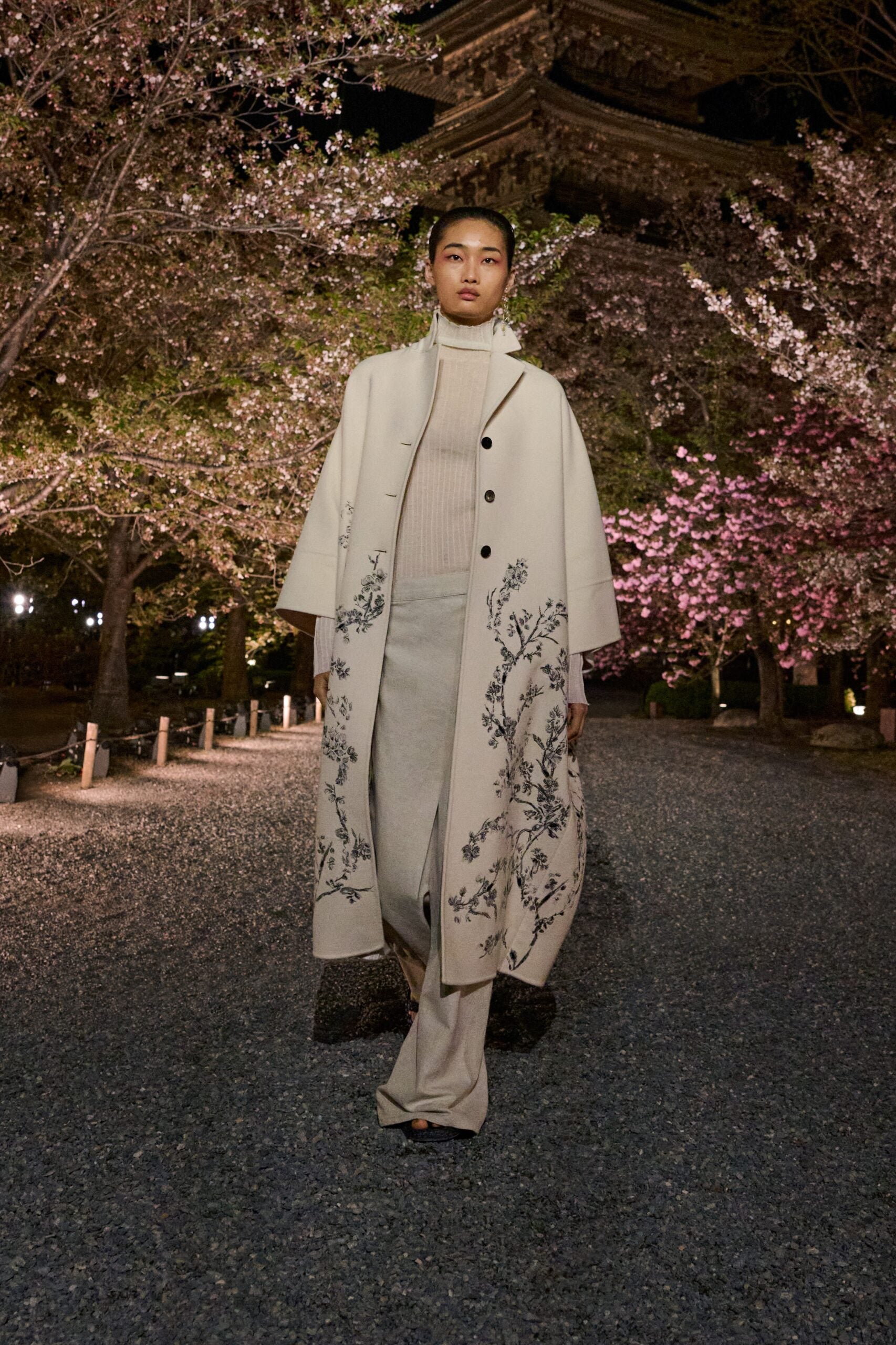
Chiuri drew from these historical inspirations not merely to replicate but to evolve and honor them. The collection moved effortlessly between boldness and restraint, from sculptural coats draped open over wide-legged trousers to delicate silk gowns etched with evocative Japanese garden scenes. The palette remained soft, grounded in shades of black, ivory, dusty pink and gold, allowing the intricate textures and rich details to shine. Sheer fabrics floated like mist, and golden embroidery reflected moonlight. Embroidery transcended decoration, each stitch narrating a story rooted in memory and myth.
The collection was enriched by a series of extraordinary collaborations with Japan’s most revered artisans. Master dyer Tabata Kihachi revitalized Dior’s 1953 cherry blossom print using his intricate Kyo-Yuzen technique. The Fukuda family, stewards of a dyeing and embroidery research institute for three generations, infused gowns and flowing skirts with vibrant colors and intricate dye work reflective of Japan’s textile heritage.
[See also: Miu Miu Launches the Balmoral Collection]
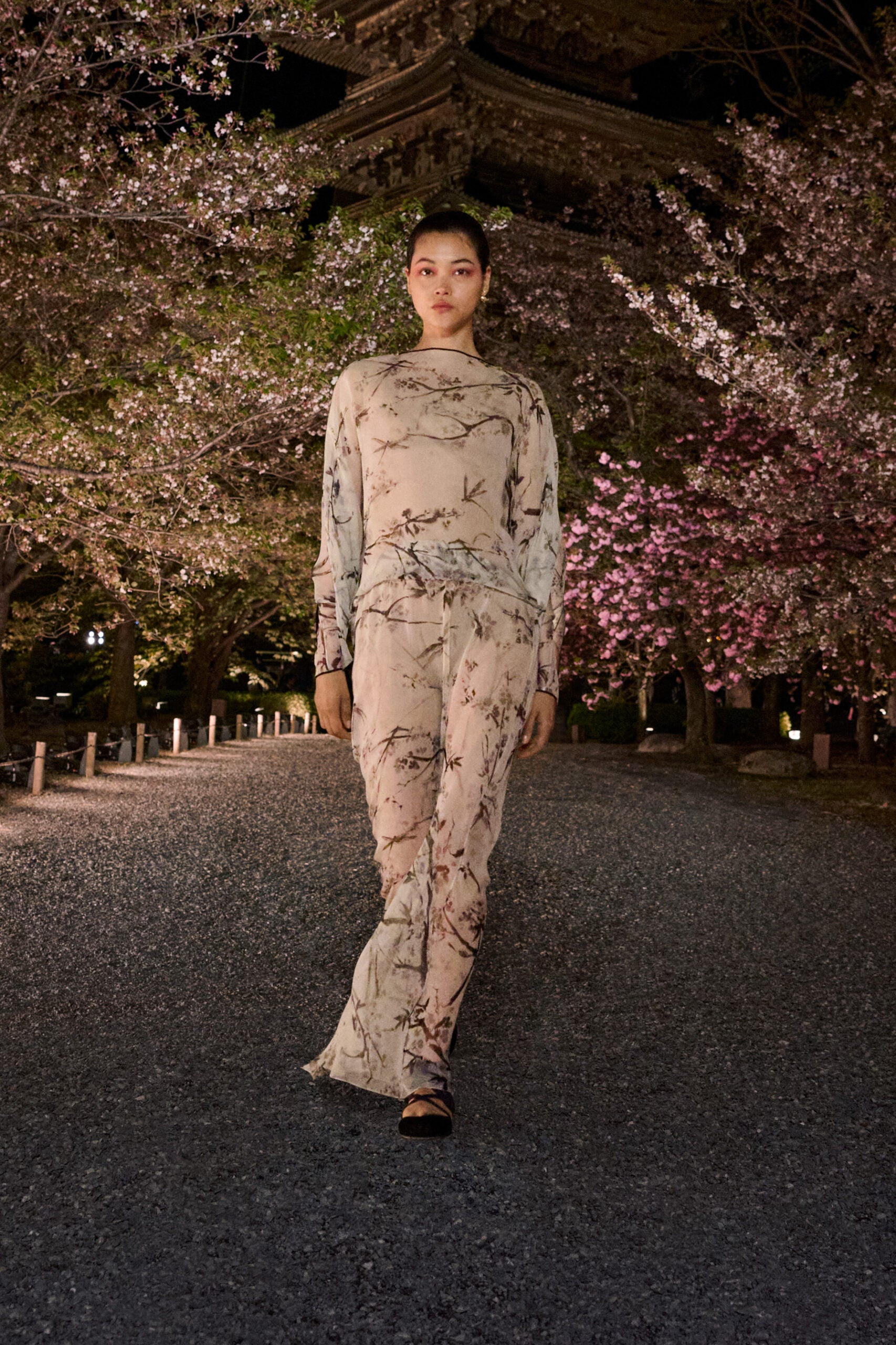


Accessories echoed the collection’s refined lyricism. The Dior Book Tote appeared embroidered with delicate floral motifs, each stitch a subtle nod to the garden landscapes that inspired the collection. Hats crafted by Tokyo-based milliner Sawa Vaughters transformed the traditional kasa into chic, sculptural accessories that bridged historical reverence and modern sophistication. Jewelry was subtle yet intentional, with pieces featuring floral and natural motifs. Dior Tribales earrings were reinterpreted with pearlescent cherry blossom accents, while delicate gold bracelets and rings resembled branches in bloom.
Completing the vision, Peter Philips, Dior’s creative and image director for makeup, crafted ethereal beauty inspired by blooming cherry trees. Soft pink and bordeaux tones washed gently over the eyes, diffused outward like watercolor. Skin remained luminous and natural, untouched by traditional contouring or blush, as if gently kissed by the fresh spring air.
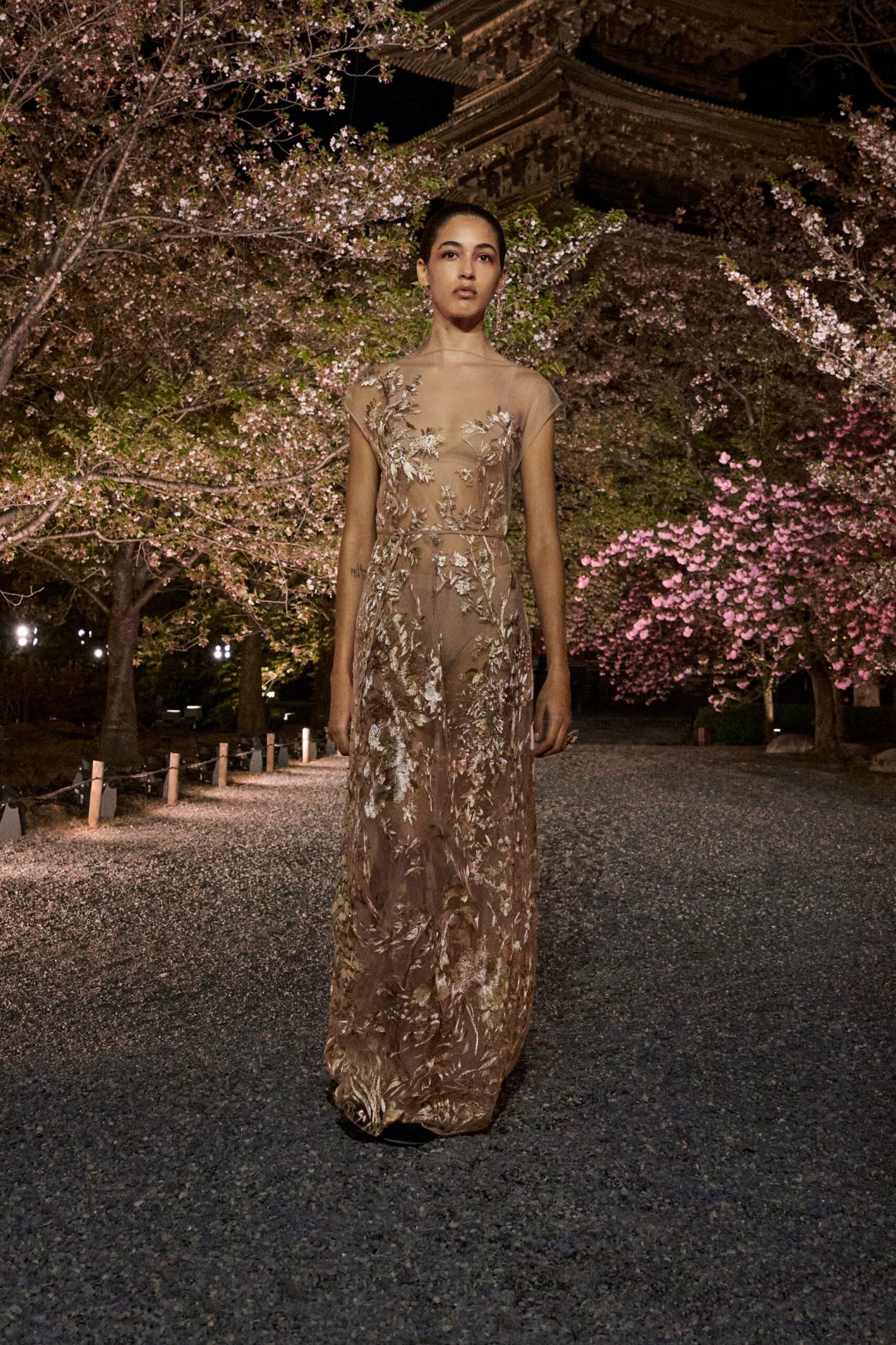
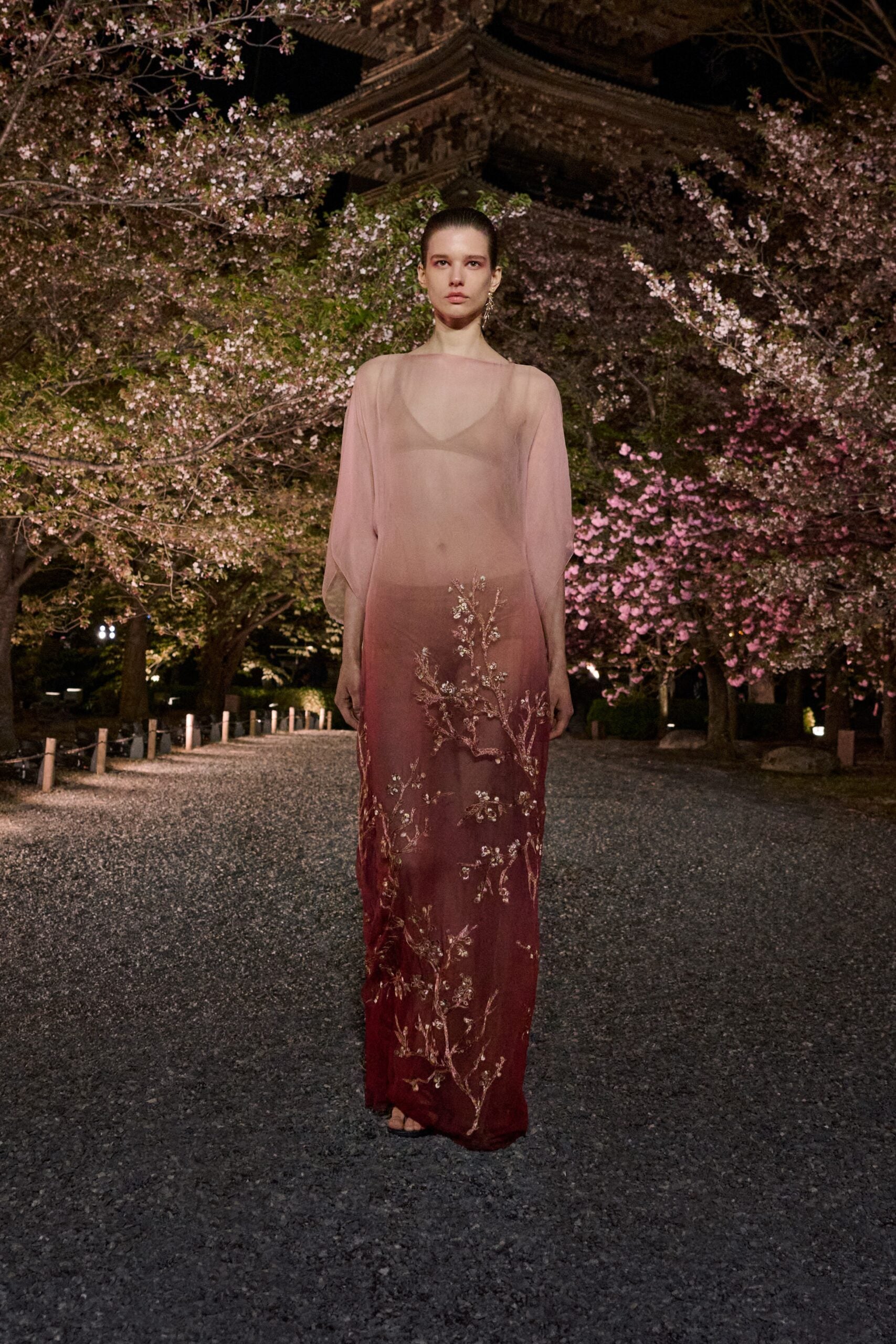
[See also: Eittem’s One-of-a-kind Sculptural Bags are Handcrafted in New York]


